Figure shows an Amperian path ABCDA. Part ABC is in vertical plane PSTU while part CDA is in horizontal plane PQRS. Direction of circulation along the path is shown by an arrow near point B and at D. ∮→B.d→l for this path according to Ampere's law will be
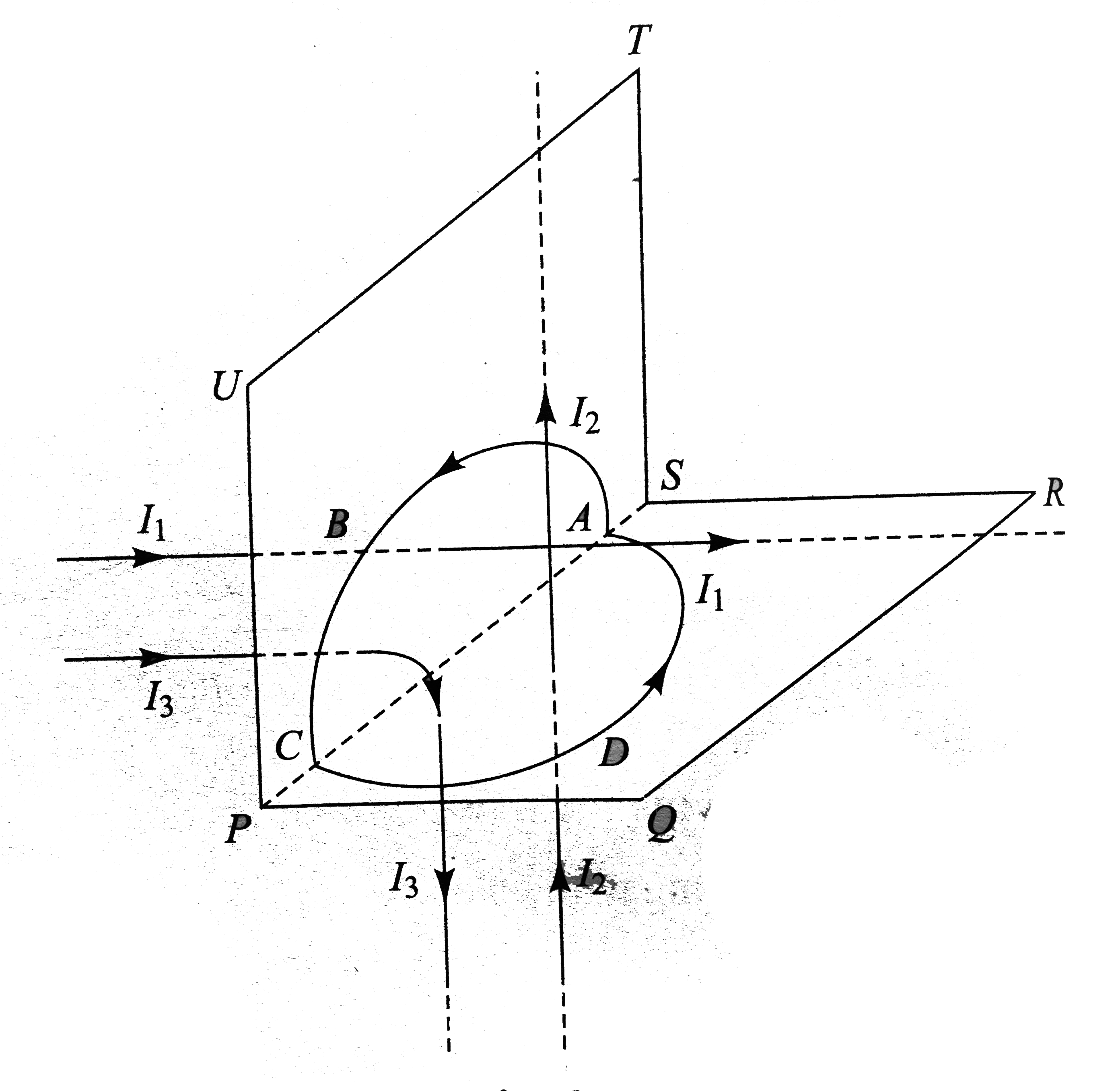
(I1−I2+I3)μ0
(−I1+I2)μ0
I3μ0
(I1+I2)μ0
The correct Answer is:D
(d) ∮→B.d→l=μ0(I1+I3+I2−I3)=μ0(I1+I2)
[since for the given direction of circulation I3 entering at
PSTU is positive while I3 at PQRS is negative]
Alternative solution: ∮ABCDA→B.→dl=∮ABCA→B.→dl+∮CDAC→B.→dl
=μ0(I1+I3)+μ0(I2−I3)=μ0(I1+I2)
Topper's Solved these Questions
- BOOK - CENGAGE PHYSICS ENGLISHCHAPTER - SOURCES OF MAGNETIC FIELDEXERCISE - Exercise (multiple Currect )5videos
SOURCES OF MAGNETIC FIELD
- BOOK - CENGAGE PHYSICS ENGLISHCHAPTER - SOURCES OF MAGNETIC FIELDEXERCISE - Exercise (assertion-reasioning )2videos
SOURCES OF MAGNETIC FIELD
- BOOK - CENGAGE PHYSICS ENGLISHCHAPTER - SOURCES OF MAGNETIC FIELDEXERCISE - Exercise (subjective )10videos
SOURCES OF MAGNETIC FIELD
- BOOK - CENGAGE PHYSICS ENGLISHCHAPTER - RAY OPTICSEXERCISE - DPP 1.612videos
RAY OPTICS
- BOOK - CENGAGE PHYSICS ENGLISHCHAPTER - WAVE OPTICSEXERCISE - Comprehension Type14videos
WAVE OPTICS
Similar Questions
Assertion A car moves along a road with uniform speed. The path of car lies in vertical plane and shown in fighre. The radius of curvature (R) of the path is same everywhere. If the car does not loose contact with road at the highest point, it can travel the shown path without loosing contact with road anywhere else.
Reason For car to loose contact with road, the normal reaction between car and road should be zero.
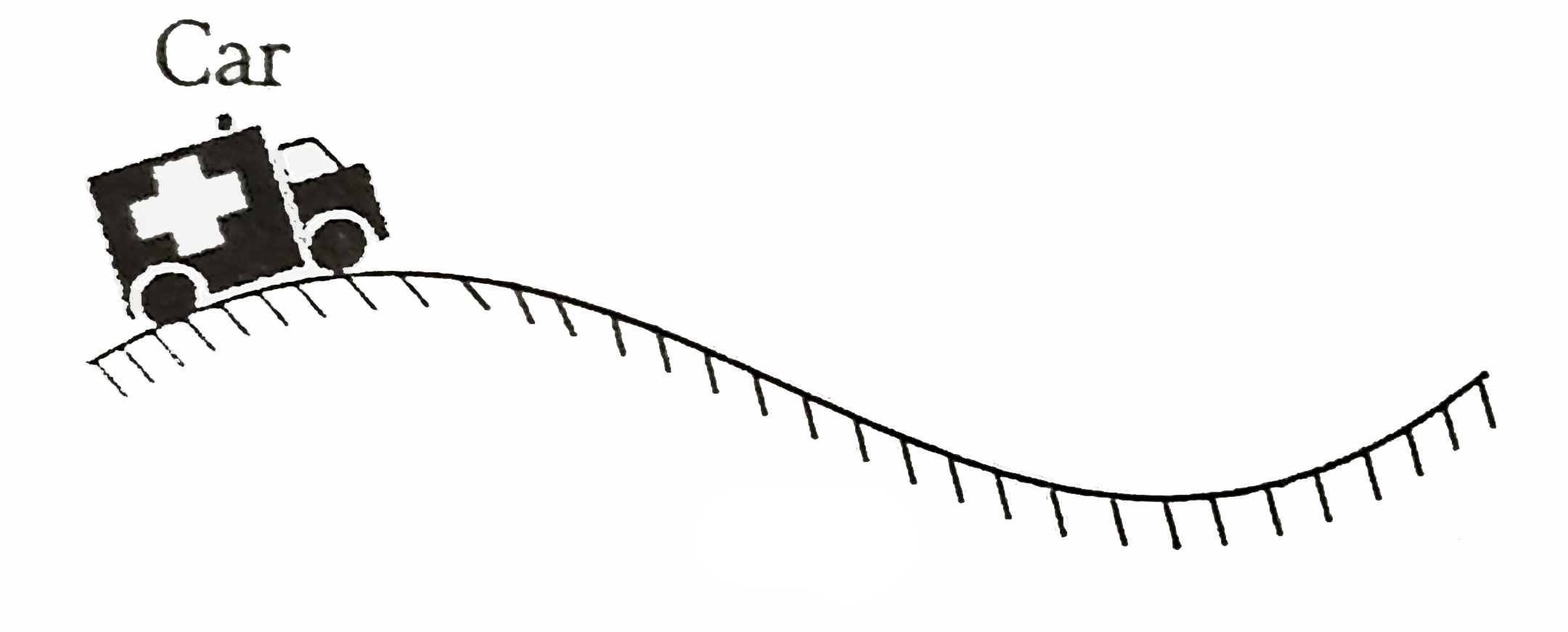 View Solution
View SolutionA small ball of mass m and charge q is attached to the bottom end of a piece of negligible mass thread of length l, whose top end is fixed. The system formed by the thread and ball is in vertical plane and is in uniform horizontal magnetic field B, which is perpendicular to the plane of figure and points into the paper
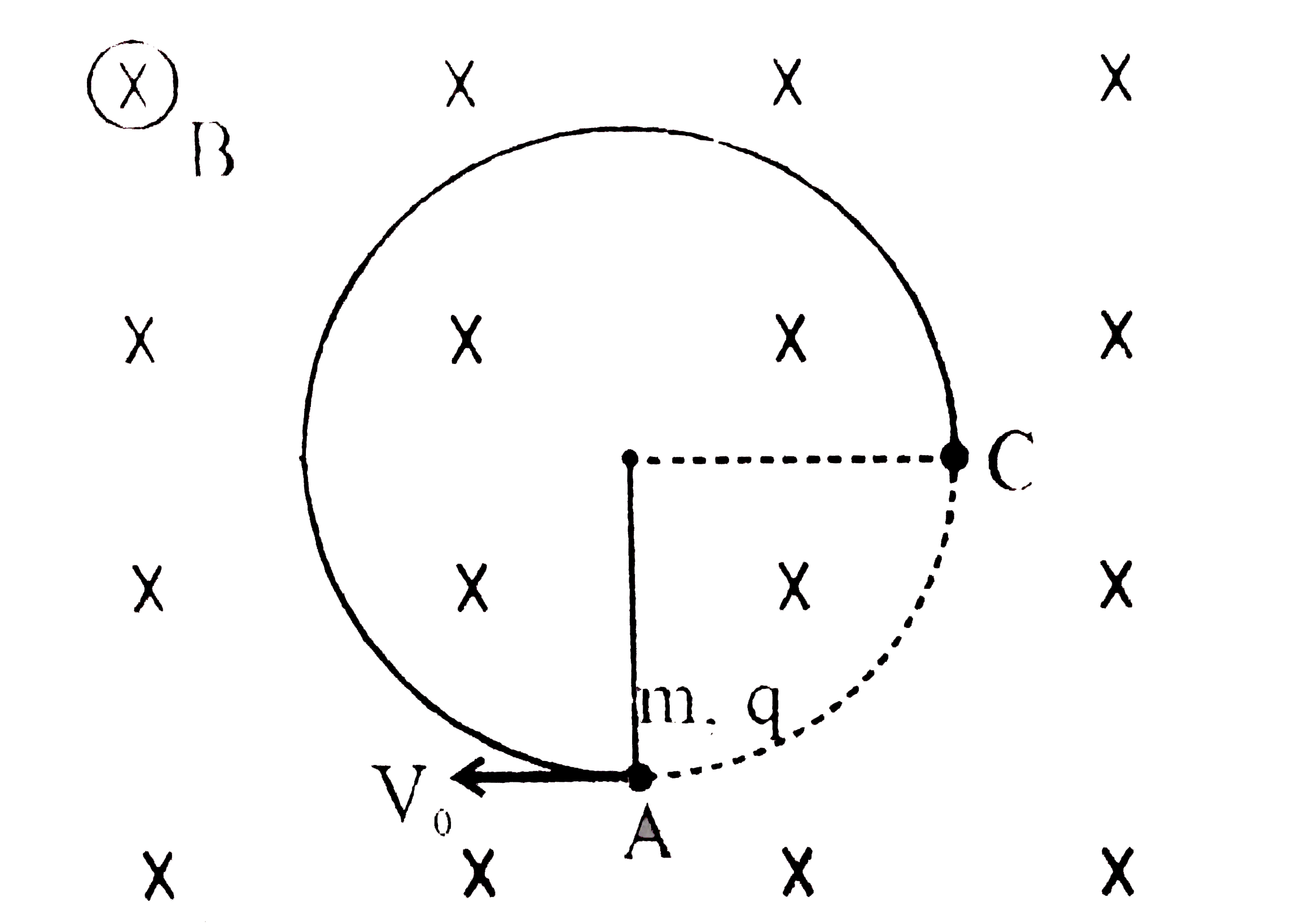
The ball is started with a velocity v0 from lower most point of circle in a direction perpendicular both to the magnetic induction and to direction of thread. The ball moves along a circular path such that thread remains tight during the whole motion. Neglect any loss of enery.
Choose CORRECT statementView SolutionFig. 12.8 shows a mixed source R of alpha and beta particles in a thick lead walled container. The particles pass through a magnetic field in a direction perpendicular to the plane of paper inwards as shown by x. (a) Show in the diagram how the particles get affected. (b) Name the law used in part (a).
[Hint : alpha particles will deflect to the left while beta particles to the right]
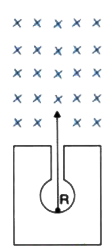 View Solution
View SolutionTwo particles A and V are projected in the vertical plane with same initial velocity u0 from part (0,0) and (l,-h) towards each other as shown in figure
The path of particle A with respect to particle B will be –
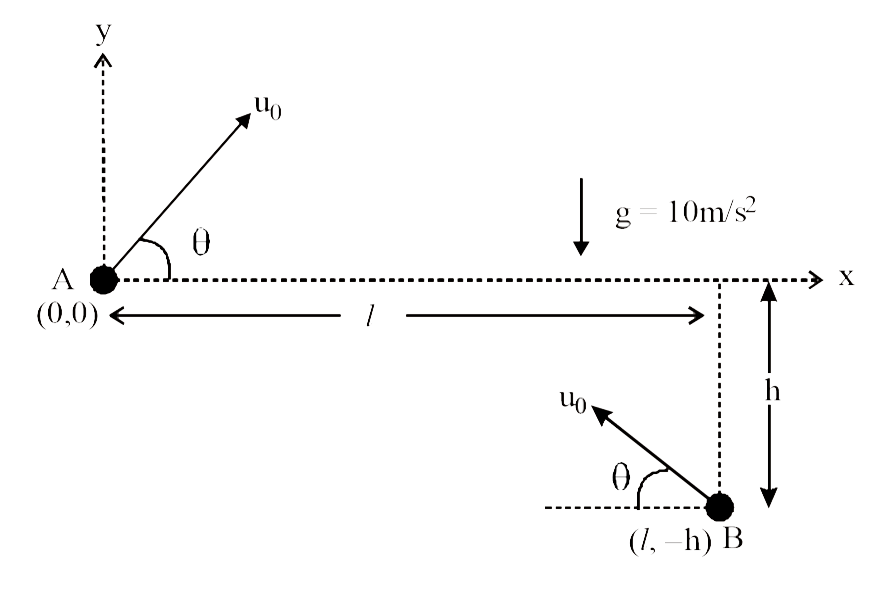 View Solution
View SolutionFigure. shows a conducting loop ABCDA placed in a uniform magnetic field (strength B) perpendicular to its plane. The part ABC is the (three-fourth) portion of the square of side length l. The part ADC is a circular arc of radius R. The points A and C are connected to a battery which supplies a current I to the circuit. The magnetic force on the loop due to the field B is
 View Solution
View SolutionFigure. shows a conducting loop ABCDA placed in a uniform magnetic field (strength B) perpendicular to its plane. The part ABC is the (three-fourth) portion of the square of side length l. The part ADC is a circular arc of radius R. The points A and C are connected to a battery which supplies a current I to the circuit. The magnetic force on the loop due to the field B is
 View Solution
View SolutionA small ball of mass m and charge q is attached to the bottom end of a piece of negligible mass thread of length l, whose top end is fixed. The system formed by the thread and ball is in vertical plane and is in uniform horizontal magnetic field B, which is perpendicular to the plane of figure and points into the paper
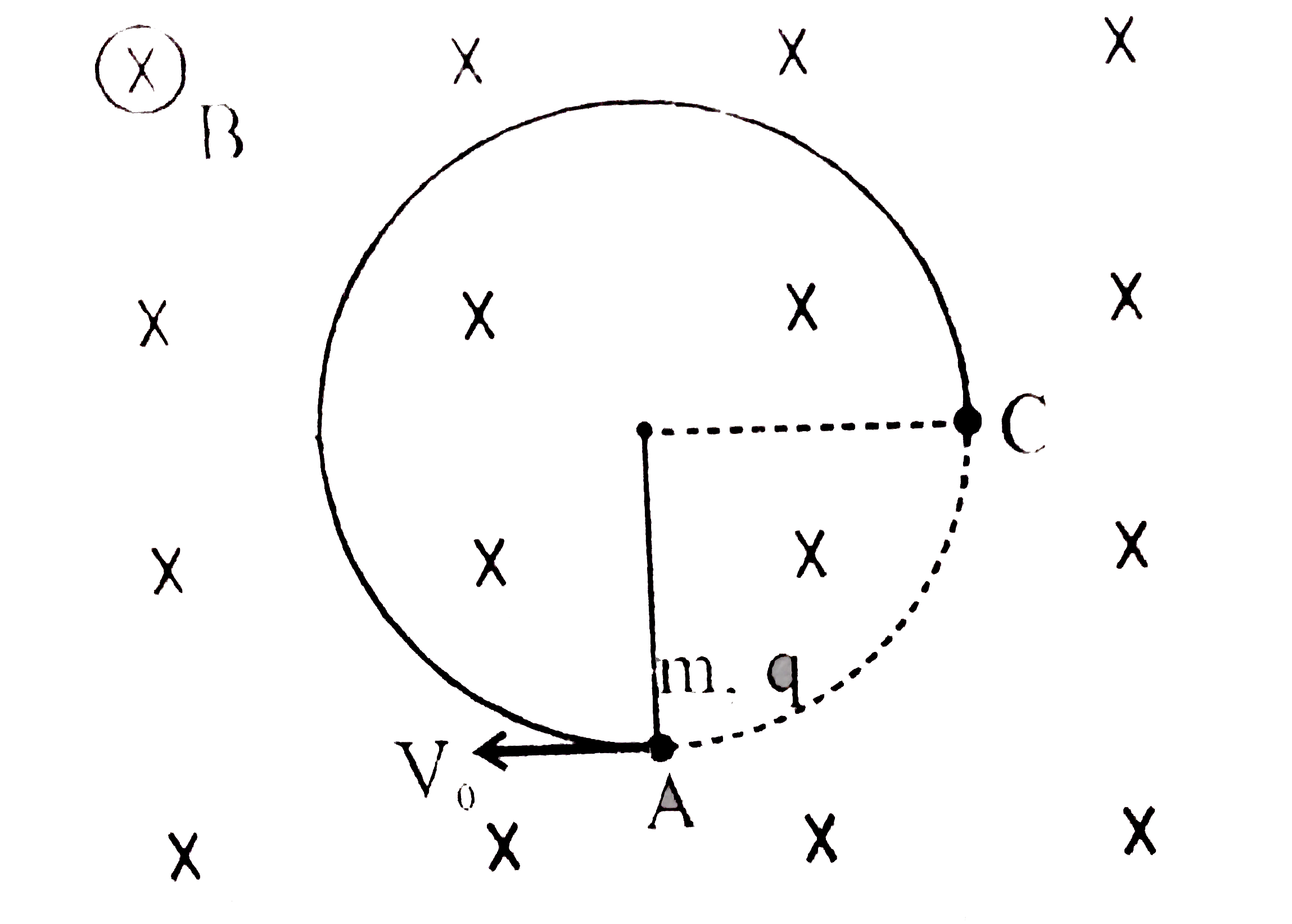
The ball is started with a velocity v0 from lower most point of circle in a direction perpendicular both to the magnetic induction and to direction of thread. The ball moves along a circular path such that thread remains tight during the whole motion. Neglect any loss of enery.
What is the magnitude of magnetic induction B, if the minimum initial speed at which the described motion of ball (complete vertical circular motion) occurs is V0=12√17gLView SolutionFigure shows three paths connecting points a and b, A single force F does the indicated work on a particle moving along each path in the indicated direction. On the basis of this information, is force F conservative?
 View Solution
View SolutionABCDA is a closed loop of conducting wire consisting of two semicircular sections, the part ABCD lying in the XY plane and the part CDA lying in the YZ plane, both the parts having the centre at origin O (see the diagram). This loop is placed in a uniform field →B which varies with time.
Radius of the semicircular section is 0.5 m
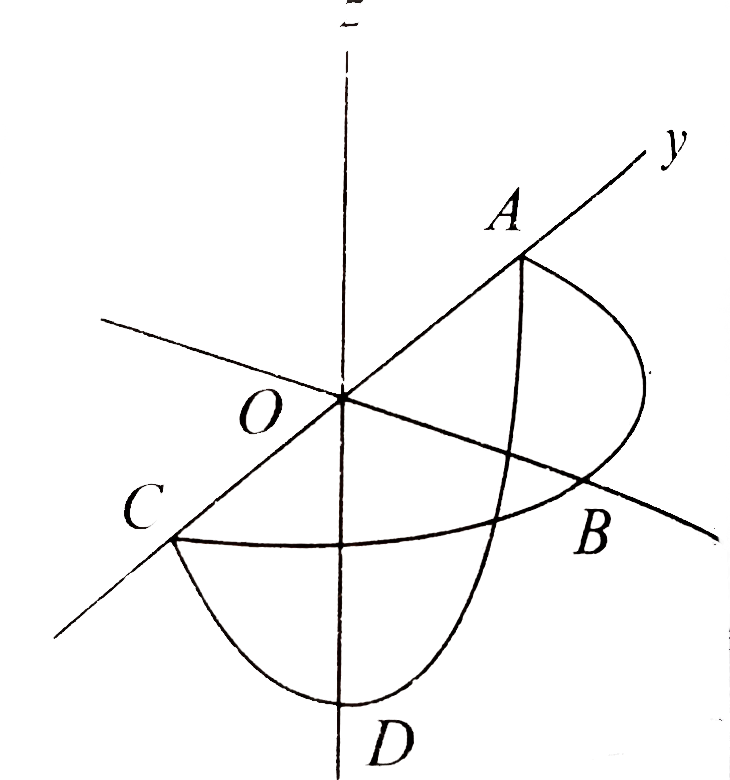
If →B be directed along the +z axis and increases at the rate of 10−2Teslasecond. the magnitude and sense of the induced emf in the loop as seen along the field direction will beView SolutionA small body is released from point A of smooth parabolic path y=x2, where y is vertical axis and x is horizontal axis at ground, as shown. The body leaves the surface from point B. If g=10ms−2 then what is the value of d (in m)?
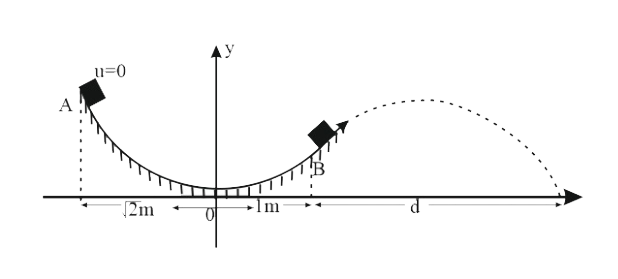 View Solution
View Solution

